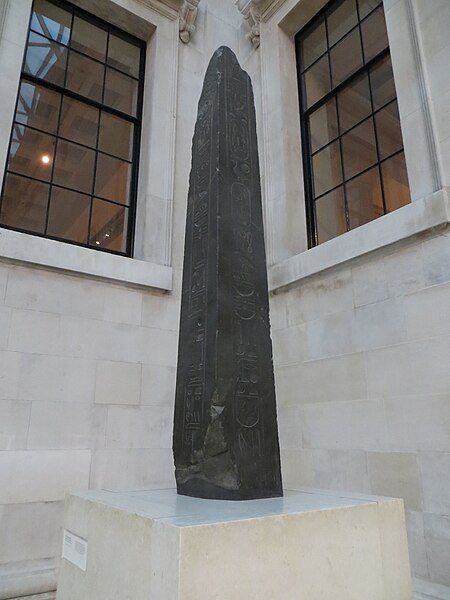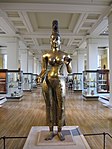Obelisks of Nectanebo II
4th-century BC sculptures4th century BC in EgyptAncient Egyptian obelisksAncient Egyptian objects in the British MuseumSculptures of ancient Egypt ... and 1 more
Thirtieth Dynasty of Egypt

The Obelisks of Nectanebo II are a pair of monumental obelisks that were found in Cairo but were originally located in the ancient city of Hermopolis (modern Al-Ashmunayn), central Egypt. The fragmentary monoliths were recovered by French scholars as part of Napoleon's 1798 expedition to Egypt but, after the capitulation of French forces, they were confiscated by the British, along with a number of antiquities including the Rosetta Stone, and transported to England. They can now be seen in the Great Court of the British Museum.
Excerpt from the Wikipedia article Obelisks of Nectanebo II (License: CC BY-SA 3.0, Authors, Images).Obelisks of Nectanebo II
Great Court, London Bloomsbury (London Borough of Camden)
Geographical coordinates (GPS) Address Nearby Places Show on map
Geographical coordinates (GPS)
| Latitude | Longitude |
|---|---|
| N 51.519444444444 ° | E -0.12694444444444 ° |
Address
Reading Room
Great Court
WC1B 3DE London, Bloomsbury (London Borough of Camden)
England, United Kingdom
Open on Google Maps









